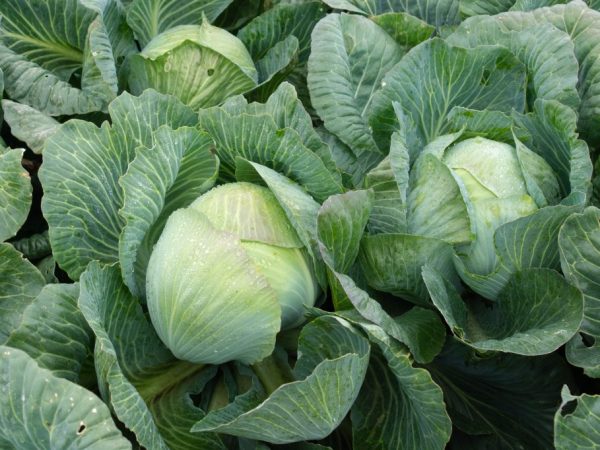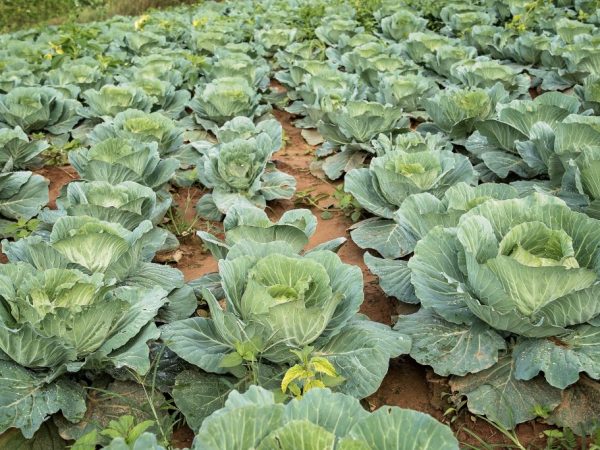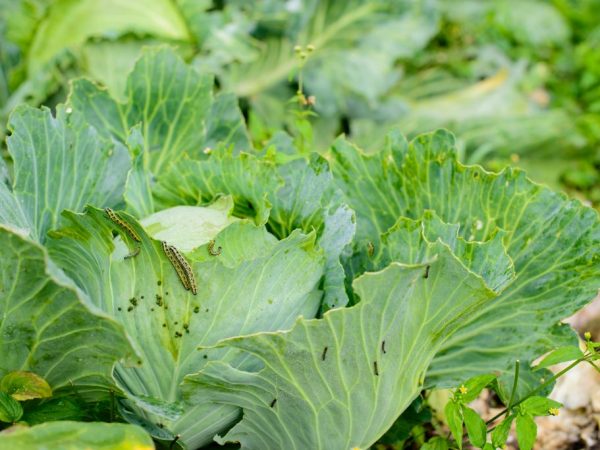Characteristics of early cabbage varieties Akira f1
White cabbage is in great demand in the spring market. Early Akira cabbage is one of the most profitable varieties if the purpose of growing is to sell at the beginning of the season. This variety of culture is popular due to its appearance and taste.

Characteristics of early cabbage varieties Akira f1
Variety characteristic
Early cabbage Akira f1 is one of the most common varieties of white cabbage. This type of plant is best planted early in the season. The ripening period for Akira f1 cabbage seeds is about 50 weeks.
The advantages of this variety, according to the description, are:
- simultaneous maturation;
- neat appearance;
- weight from 1 to 2.5 kg;
- good transport tolerance;
- adaptability for dense planting;
- resistance to decay;
- high commercial quality.
Cultivation of this variety is carried out under agrofibre or in temporary shelters under a film.
The head of cabbage has a spherical shape. The structure of the fruit is very firm. The cabbage is bright green. The head of cabbage leaves are compact enough, their shape looks beautiful. The average weight of a head of cabbage is 1-2 kg. The stump is very small.
Application of the vegetable
The following dishes can be prepared from the Akira f1 crop:
- cabbage rolls;
- vegetable puree soup.
- stewed cabbage;
- various salads.
Early varieties can be pickled for the winter. This requires:
- a head of early cabbage;
- hot red pepper;
- carrot;
- vegetable oil.
The filling is prepared by adding acetic acid, sugar and salt to the water. The vegetables are washed thoroughly. Finely chop the carrots and peppers, and chop the head of cabbage. All ingredients are placed in a jar and poured.
Care
Loosening

All weeds need to be removed
It is possible to loosen the soil both with the help of a regular hoe, and using special tools. All weeds that have appeared in the place of growth of the vegetable must be carefully weeded.
Hilling
To combat harmful plants, hilling is used under the rosette of cabbage leaves. Thanks to this manipulation, the crop has additional roots and increased resistance to harmful weeds.
Seat selection
When choosing a site for planting, you need to make sure that the plant will receive enough sunlight. Plants that grow in the shade are more susceptible to disease, and the fruit becomes less tasty.
Top dressing
To accelerate growth, various fertilizing and mineral fertilizers are used.
- The first feeding is carried out a week after planting the seedlings in the ground, when the plants have a growing season.
- After 2 weeks, a second feeding is done, increasing the dose of fertilizers by at least 2 times.
Watering
Early varieties are very capricious to soil moisture. Dried leaves should not be allowed due to the small amount of moisture in the soil. This is a symptom of the death of the fibrous roots of the plant. Determining the need for watering is very simple: you need to dig out some soil, which is at a depth of 5-6 cm from the surface.If the earth does not hold in a heap, but crumbles when trying to squeeze it into a lump, watering is carried out.
The need for water increases as the culture develops. The more leaves, the more water the plant requires, and the most water is needed during head formation. The daily consumption of water per fruit is 10-12 liters.
Watering of the plants is completed 2-3 weeks before the start of harvesting. Excessive moisture during harvesting can cause the fruit to crack, leading to the formation of abscesses on them.
Pests

Inspect the plants regularly
The main plant pests are:
- cruciferous flea;
- cabbage fly;
- butterflies;
- aphid;
- keel.
Flea
To combat cruciferous flea, insecticides are used. Effective folk remedies are wood ash or tobacco tinctures. To prepare 250 g of the substance, dissolve in 10 l of water.
Cabbage or cabbage fly
The cabbage fly is a very dangerous insect for the garden. She lays her eggs under the breasts of the earth next to the growing crop. After a week, larvae hatch from the eggs, which penetrate the root system of the plant and eat it. The prevention of such a disease is the earliest possible planting of seedlings in the ground before the appearance of flies. During this time, the fruits develop strongly enough to withstand external stimuli. You can get rid of the fly larvae that have already appeared with the help of insecticides. One plant needs 200 ml of the product. Watering is carried out every 7 days.
Butterfly
Butterflies are harmful in that they lay eggs on the leaves of the plant. After a while, offspring appears in the form of various caterpillars, which eat the head of cabbage from the inside. The larvae dig their passages there and leave waste products, which leads to rotting of the fetus. To combat caterpillars, both insecticides and a large number of folk remedies are used without chemical exposure. One of these methods is spraying the plantings with the infusion of their tomato stems.
Aphid
The fight against aphids is carried out using similar methods. The symptoms of the appearance of the pest are pinkish leaves.
Diseases
Keela is a parasite that feeds on the plant and lives in it. Prevention of such a disease is not carried out due to the difficulty in detecting the fungus.
The symptoms of the disease are withered leaves and slow development of the head of cabbage. Harmful formations appear on the roots. You can stop the spread of the disease only by removing the affected plant from the garden.
Conclusion
The early Akira f1 cabbage is one of the best varieties for planting, but the plant is very moody in temperature and humidity. Like any type of early cabbage, Akira requires constant and timely care.


